Image Archive
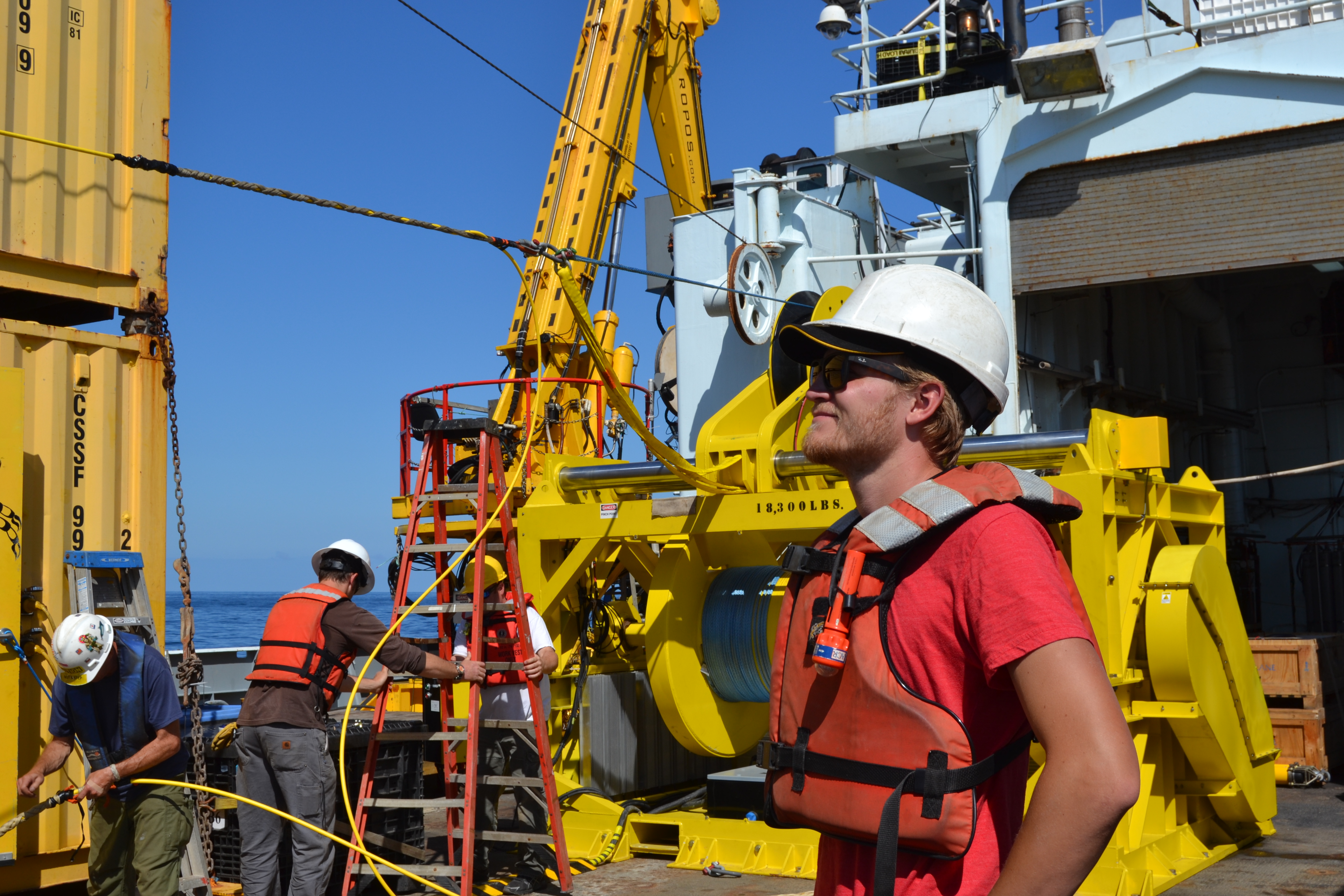

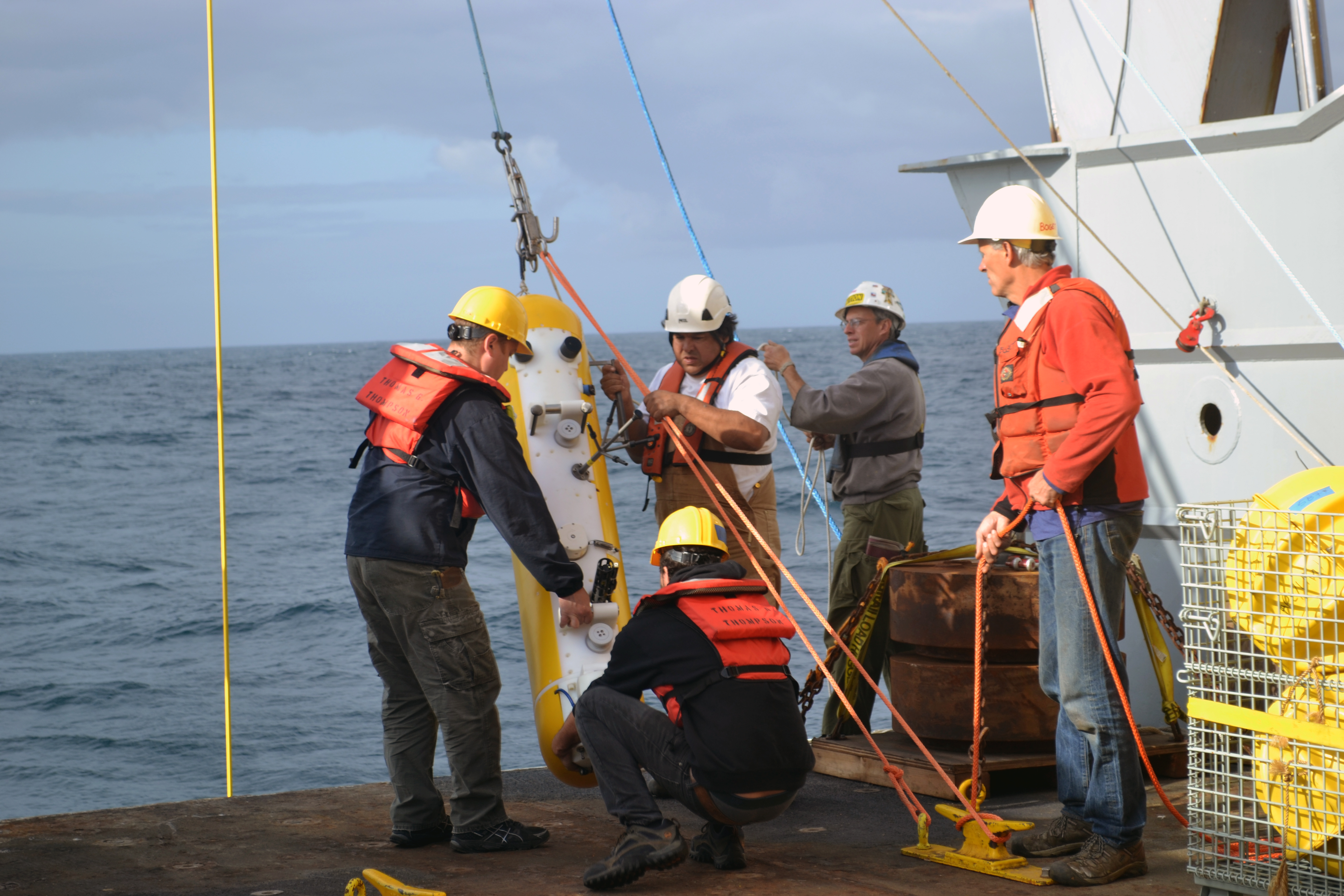

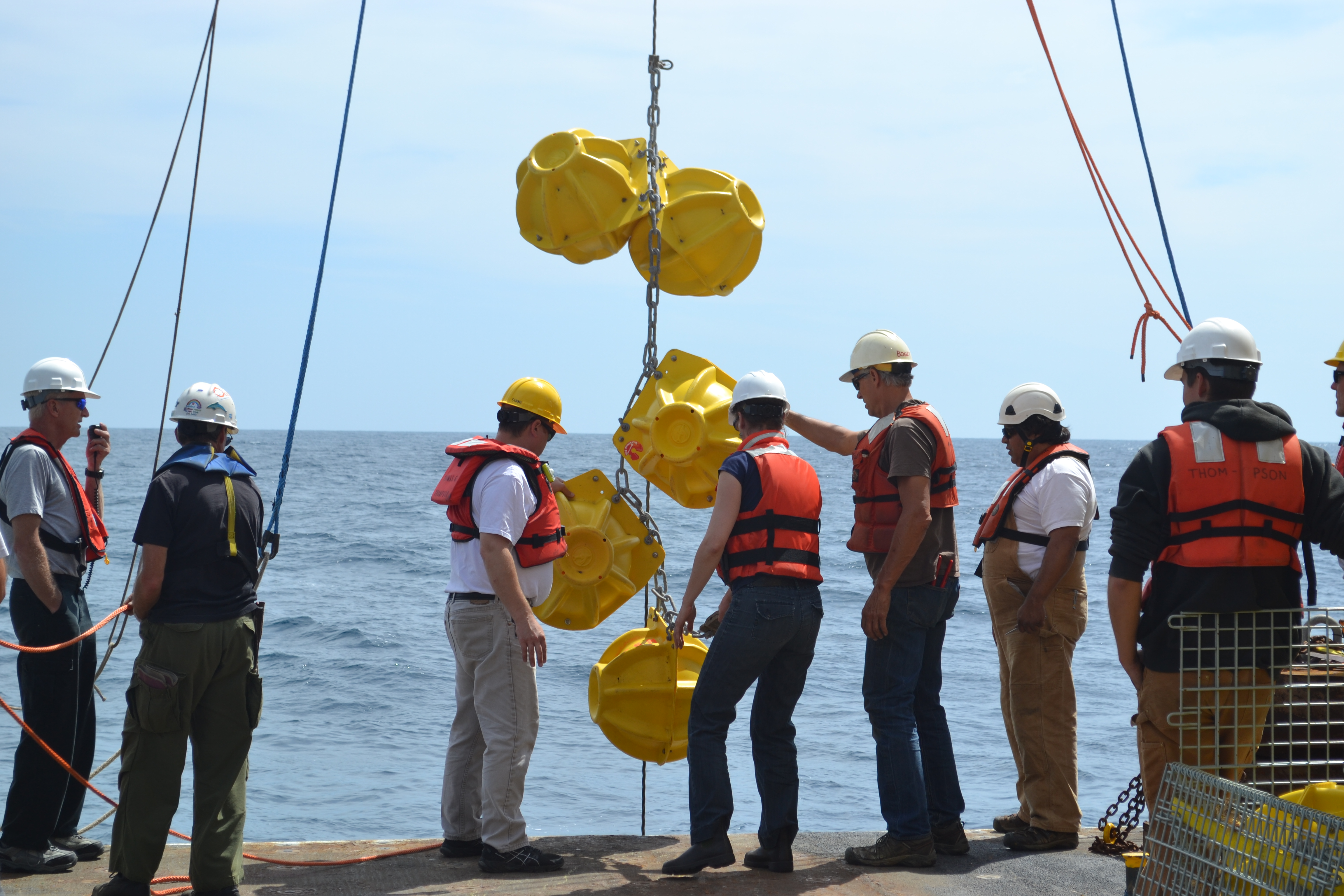


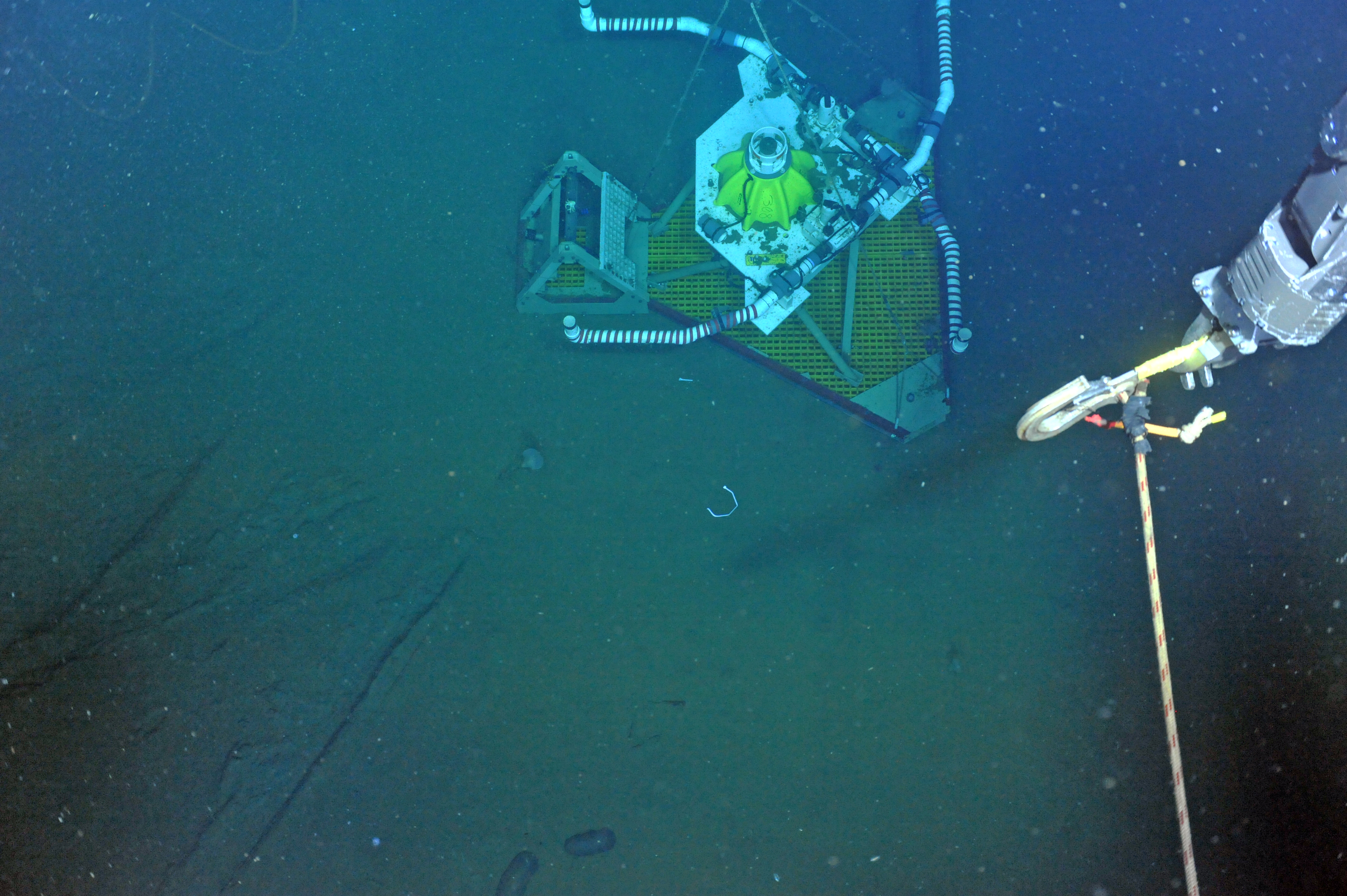

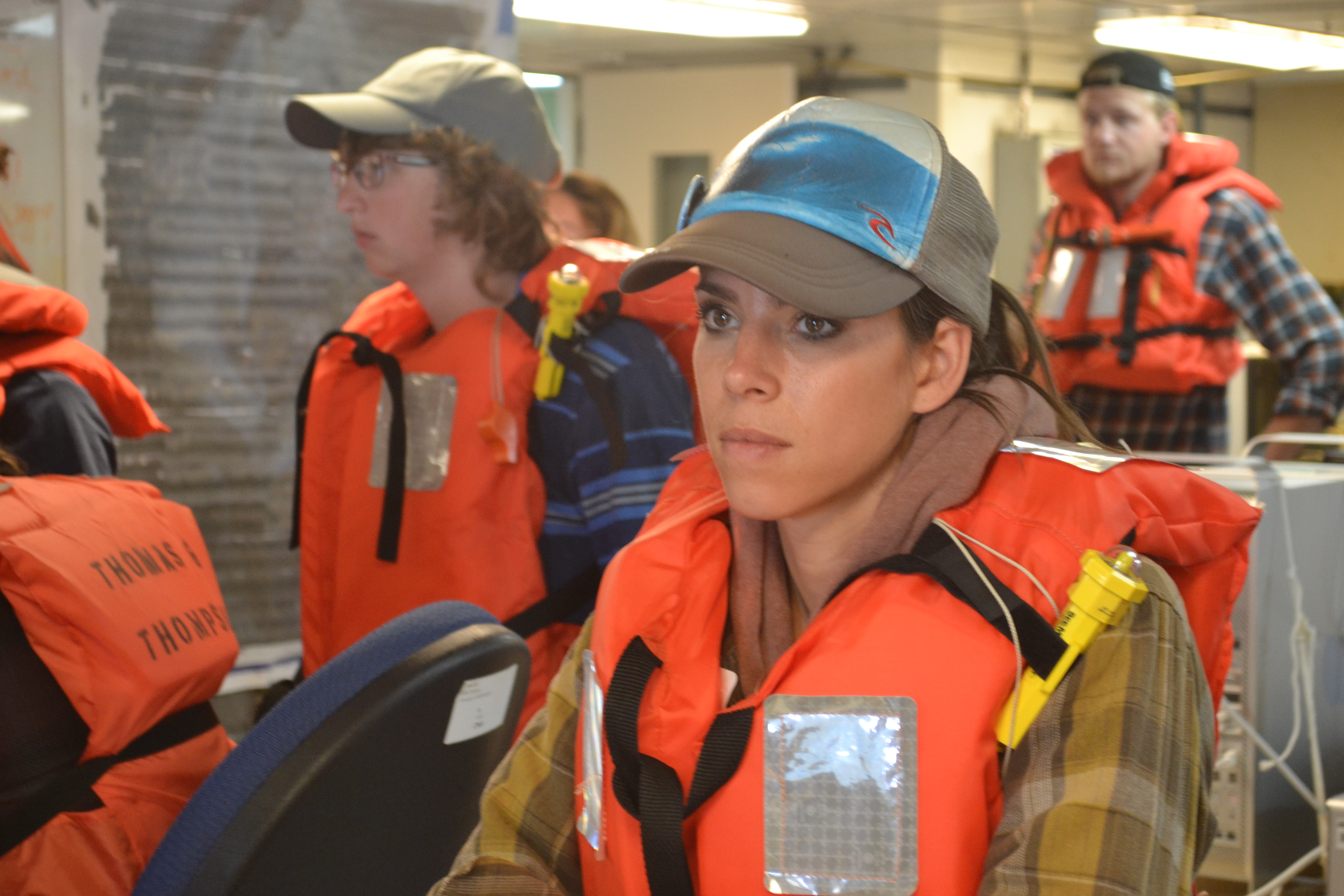





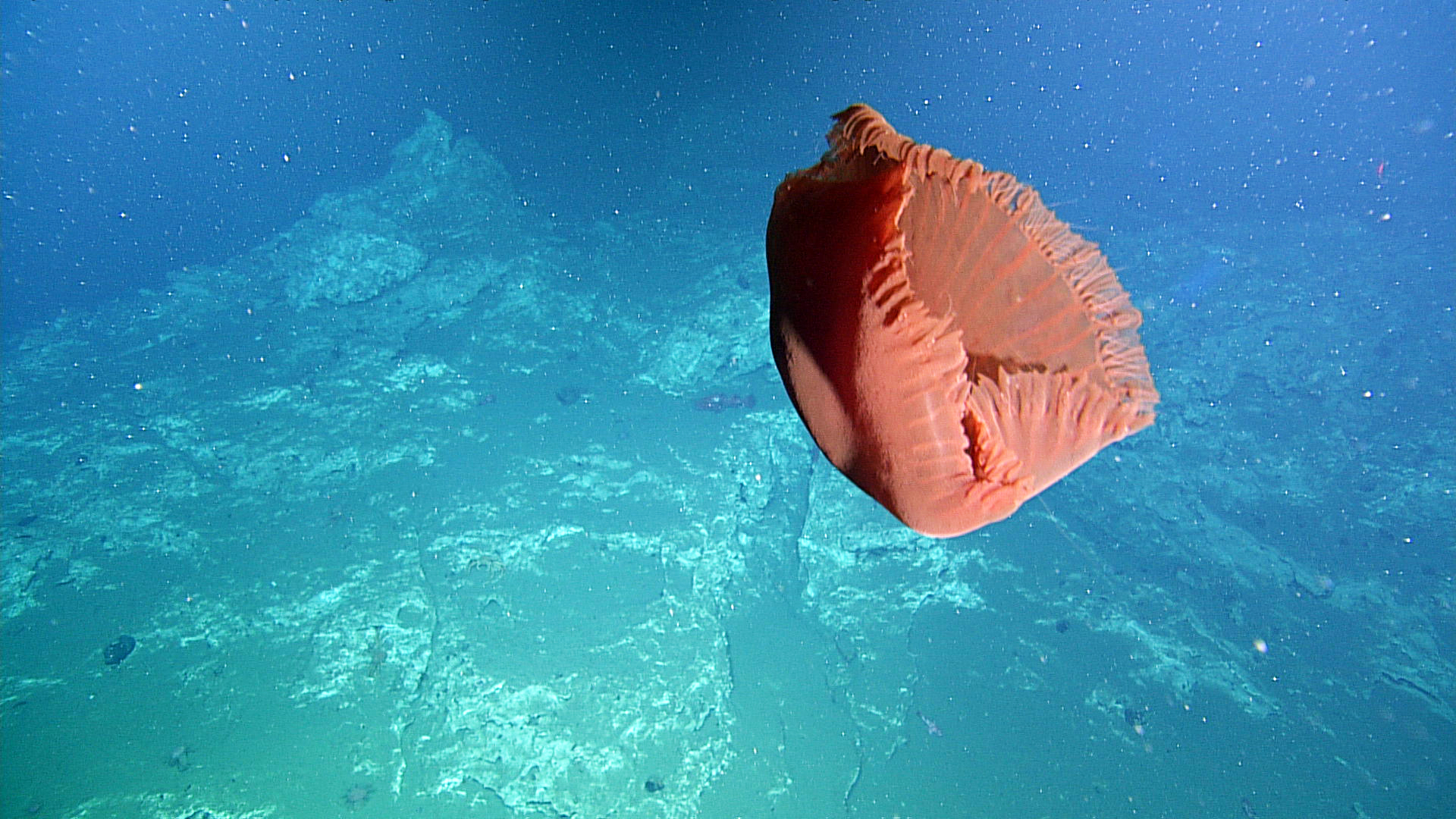

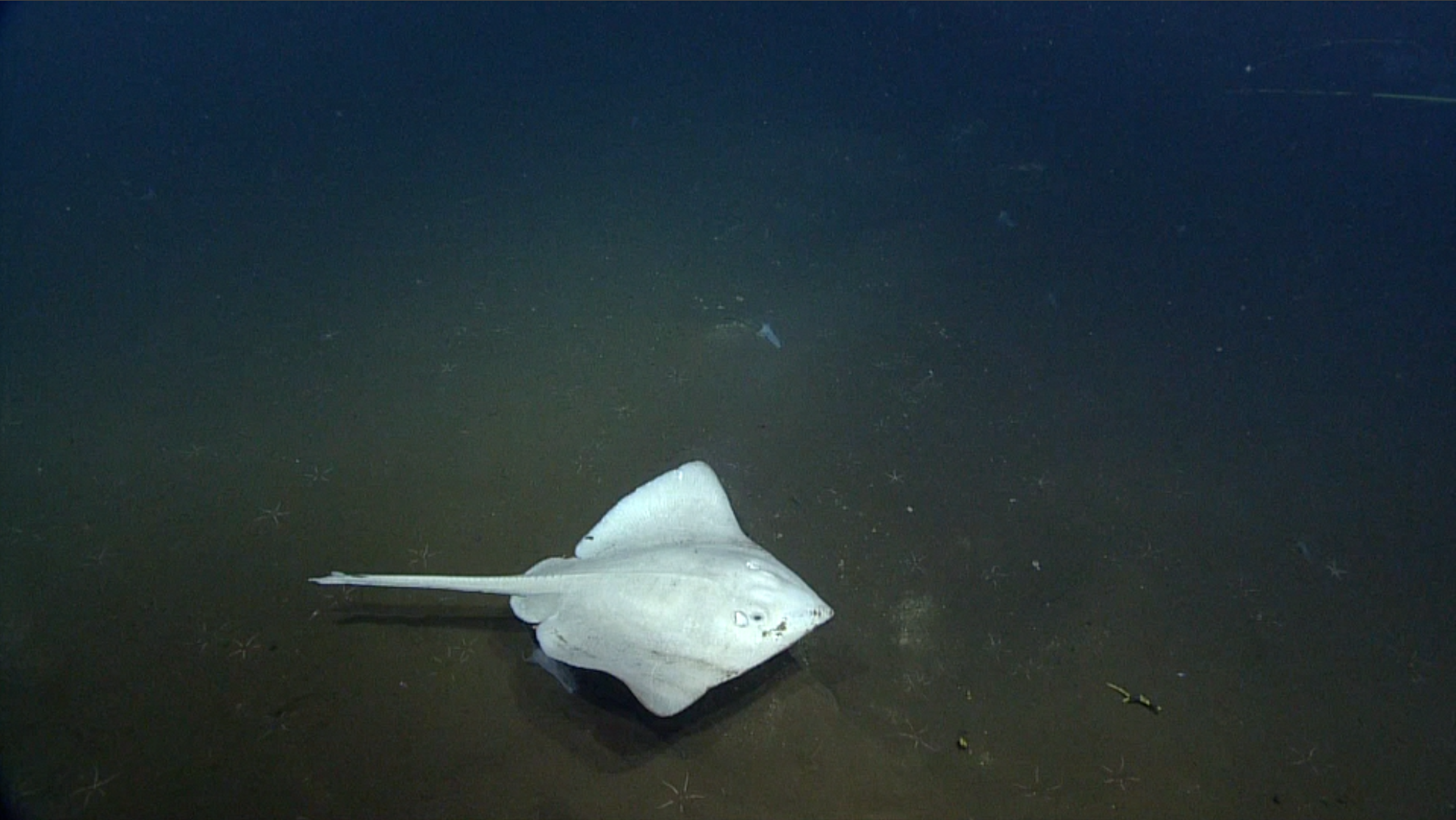
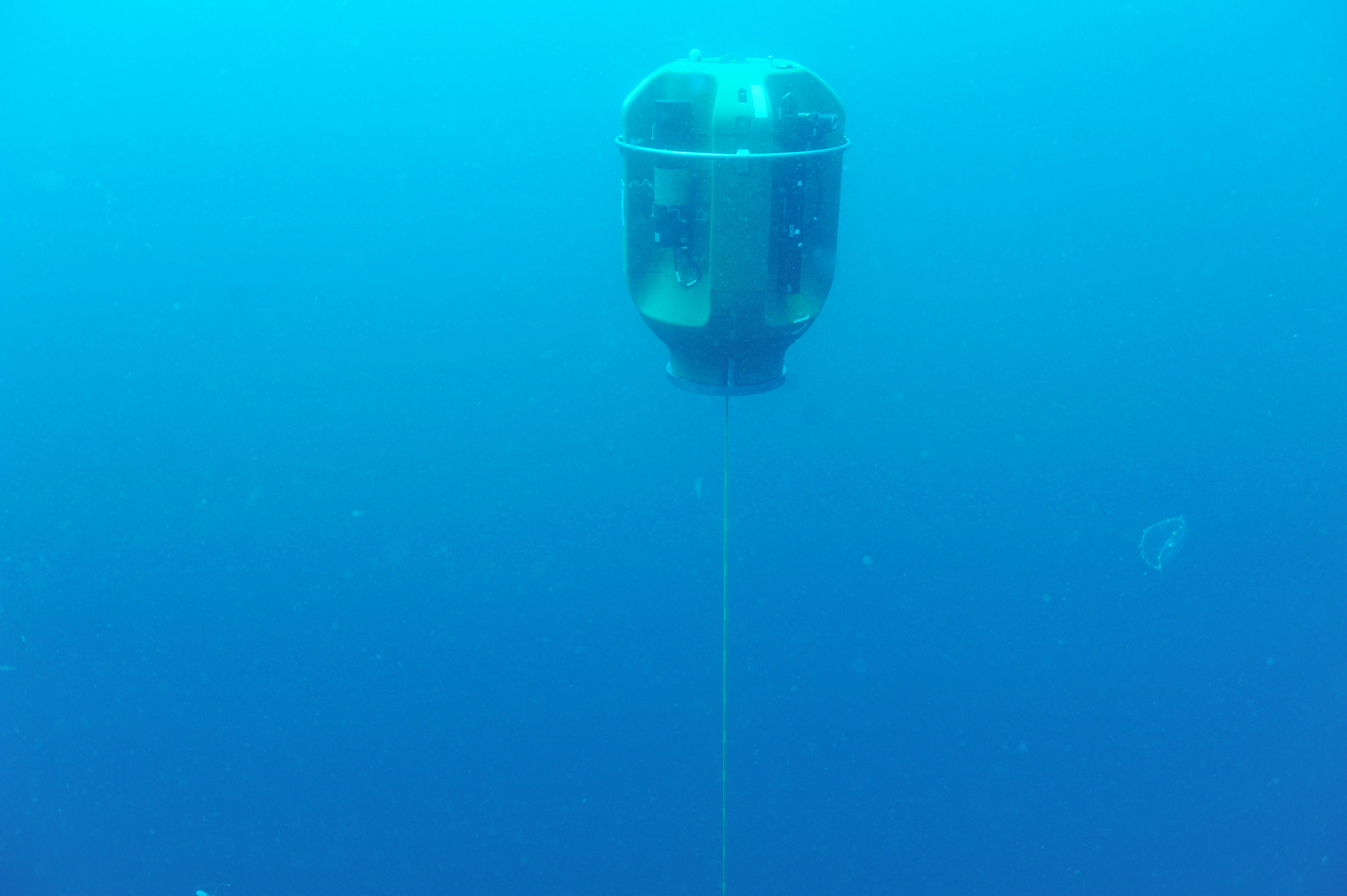



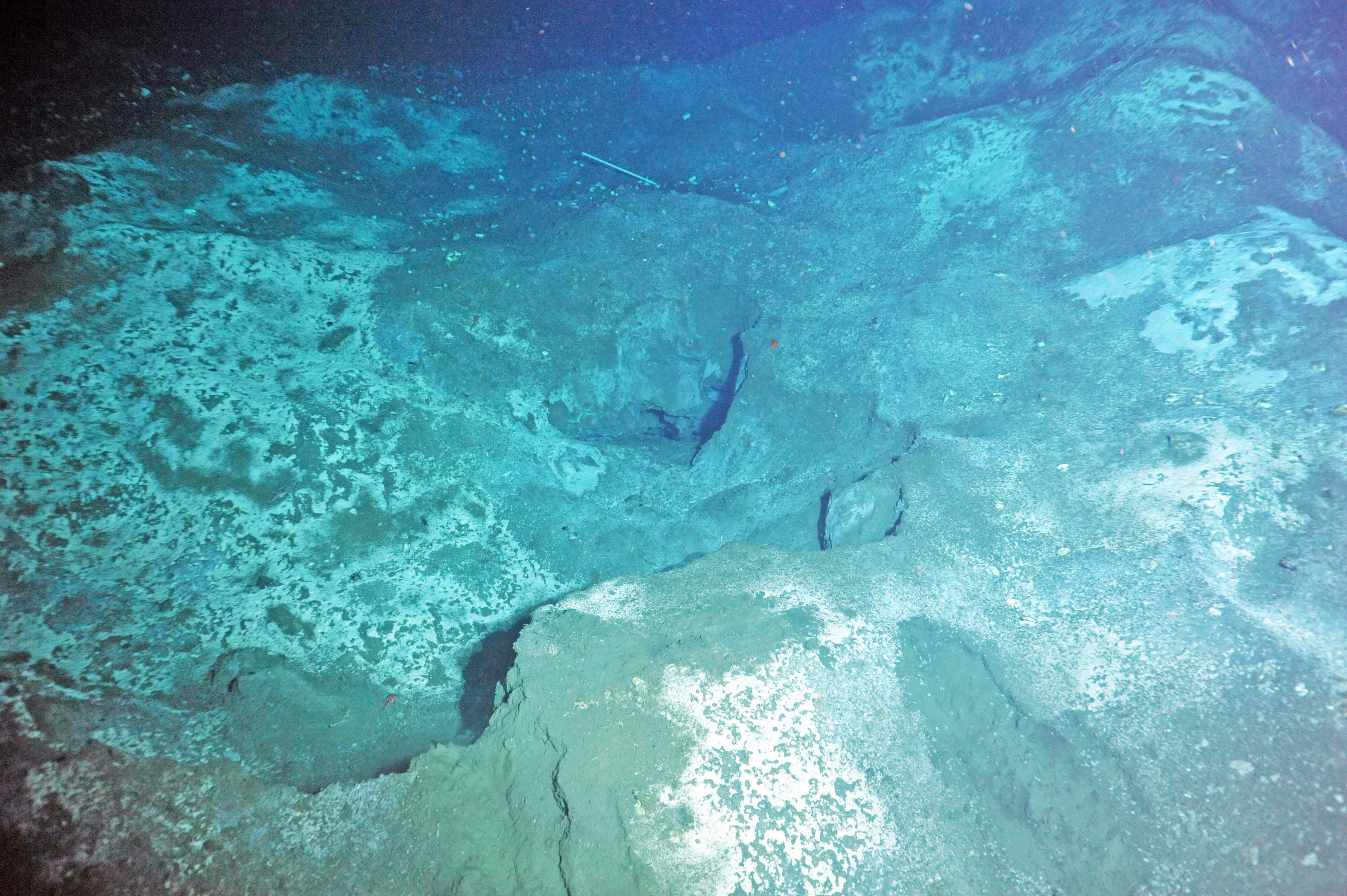
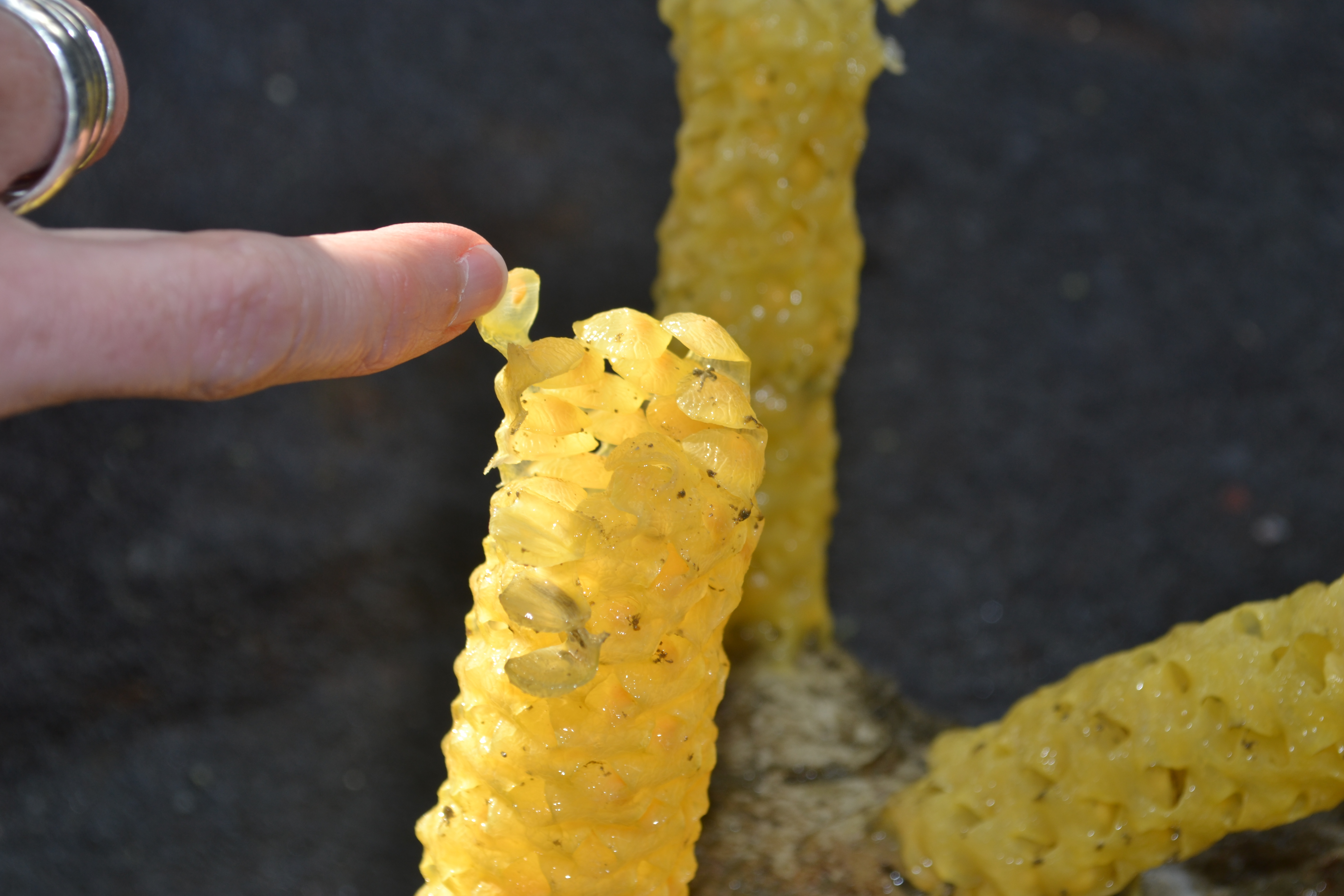





Quae Atwood, from Western Washington University, onboard the R/V Thompson during Leg 2 of the VISIONS'15 expedition. Credit: Tracie Barry, Grays Harbor College; V15.

The Deep Profiler installed July 22, 2015 at the Slope Base site is caught profiling at a water depth of 2775 m beneath the ocean's surface on the mooring cable during ROPOS Dive R1855. Credit: NSF-OOI/UW/CSSF; V15.

The instrumented Deep Profiler is about to be attached to the mooring cable at the Slope Base Site (water depth 2900 m) during Leg 2 of the NSF-OOI-UW VISIONS'15 expedition aboard the R/V Thompson. Credit: Mitch Elend, University of Washington, V15.

Tim McGinnis from the UW Applied Physics Laboratory prepares the docking station for the Slope Base Deep Profiler that was installed during Leg 2 of the NSF-OOI-UW Cabled Array VISIONS'15 cruise. Credit: Mitch Elend, University of Washington, V15.

Yellow "hard hats" encase glass floatation spheres that top the infrastructure on the Deep Profiler Morrings. These spheres were being installed from the fantail of the R/V Thompson as part of the Slope Base Mooring during Leg 2 of the NSF-OOI-UW Cabled Array VISIONS'15 crusie. Credit: Mitch Elend, University of Washington. V15.

The top of the Deep Profiler mooring at the Slope Base site is marked by a large syntactic foam float. This was installed during Leg 2 of the NSF-OOI-UW Cabled Array VISIONS'15 expedition. Credit: NSF-OOI/UW/ISS; V15 - ROPOS Dive R1855.

APL team wrapping yale grips to relieve tension on deployed mooring cable. Leg 2 Visions’15 expedition: Credit: Lauren Kowalski, University of Washington, V15.

The HPIES instrument at 2900 m water depth as it is about to be recovered by the ROV ROPOS during Leg 2 of the VISIONS'15 expedition. Credit: NSF-OOI/UW/ISS; V15.

The bow lines are released from the dock...freeing the R/V Thompson to continue her seaward journey. Credit: Mitch Elend, University of Washington; V15.

Tracie intent on taking in the first fire and safety meeting onboard the R/V Thompson during Leg 2 of the VISIONS'15 expedition. Credit: Mitch Elend, University of Washington; V15.

A velella velella jellyfish brought onboard during Leg 1 of the VISIONS'15 cruise. Credit: Jessie Hild, University of Washington, V15.

The R/V Thompson begins its transit to the Slope Base site from Newport, Oregon during the VISIONS'15 expedition. Credit: Mitch Elend, University of Washington, V15.

Kearstin and Jessie are happy to be sailing on Leg 1 of the VISIONS'15. Credit: Mitch Elend, University of Washington.

University of Washington undergraduate, Jessie Hild, takes water samples for follow-on analyses from Niskin bottles onboard the R/V Thompson during the Cabled Array VISIONS'15 expedition. Credit: Mitch Elend, University of Washington.

The Pinnacle, on the west of the main methane seep sites at Southern Hydrate Ridge, is a 60 m tall, rugged carbonate edifice teaming with life - dominated by high densities of soft corals, hagfish, and small squat lobsters that hide in small cavities. Credit: NSF-OOI/UW/ISS, V15.

A red jellyfish (Poralia rufescens) at Southern Hydrate Ridge undulates past the ROV ROPOS near the carbonate pinnacle site during Dive R1851. Credit: UW/NSF-OOI/CSSF; V15.

A rockfish and a pedicellasterid starfish (possibly Ampheraster sp.) are intermixed with clams near a bacterial mat on the methane seep site, Southern Hydrate Ridge during ROPOS Dive R1850. Credit: NSF-OOI/UW/CSSF, V15.

A skate swims gently past ROPOS at the base of Axial Seamount, greater than 9000 ft beneath the ocean's surface. Credit: UW/NSF-OOI/CSSF; ROPOS DIve R1841, V15.

The Oregon Slope Base Shallow Profiler, engulfed in soft sunlight, rises to ~5 m beneath the ocean's surface. It is measuring nutrients, dissolved oxygen, seawater acidity, temperature, chlorophyll, and carbon dioxide concentrations at high temporal and spatial resolution, controlled from ~70 miles onshore through the Internet at the University of Washington. Credit: NSF-OOI/UW/CSSF; V15.

UW undergraduate students Jesse, Lauren, and Kearstin help move a "mosquito" off of ROPOS's tool sled during Leg 1. This instrument has been measuring the flow of fluids into and out of a methane seep site at Southern Hydrate Ridge since it was installed last year. Credit: Mitch Elend, University of Washington.

Leg 1 of the Cabled Array VISIONS"15 expedition has been extremelly successful with the back deck of the R/V Thompson bulging at the seams with recovered infrastructure and instruments. ROPOS has had rapid turn arounds, pounding out dives. The science crew is tired, but happy. Credit: Mitch Elend, University of Washington, V15.

An octopus clings to a mooring chain at ~9500 ft water depth near the toe of the Cascadia Margine off of Newport, Oregon. UW/NSF-OOI/CSSF; V15.

A nascent collapse zone formed since last year. ROPOS found this site by seeing bubble plumes >100 m off bottom with their sonar. Following the plume to the seafloor led us to this collapse zone. Credit: NSF-OOI/UW/ISS, V15.

A close up of a beautiful stalk of Neptunea snail eggs recovered from Southern Hydrate Ridge. Credit: Mitch Elend, University of Washington, V15.

The Neptunea nursery in 2015 was devoid of tending snails on top of the egg stalks. Recovery of the stalks showed that the eggs are still viable. Credit: NSF-OOI/UW/ISS, Dive R1845, V15.

Ben Brand shows Kearstin the 'ropes' in making multicolored monkey fists. Credit: Mitch Elend, University of Washington, V15.

Deb brings in a recovered carbonate cobble with egg casings of Neptunea snails from Southern Hydrate Ridge. The eggs can take up to 1 year to hatch. Credit: Mitch Elend, University of Washington, V15.

ROPOS latches into a Shallow Profiler for installation during the Cabled Array VISIONS'15 cruise. Credit: Mitch Elend, University of Washington, V15.
- Anemone
- Animal
- Arthropod
- ASHES
- Axial
- Axial Base
- Axial Biology
- Axial Caldera
- Bacteria
- Basalt Lava
- BEP
- Biofouling
- biolgoy
- Biology
- Camds
- Camera
- Camhd
- Central Caldera
- Ciliates
- Cnidaria
- Coastal Biology
- Crab
- Deep Profiler Mooring
- Dive Highlights
- Eastern Caldera
- Echinoderms
- Endurance Array
- Engineering Team
- ENLIGHTEN 10
- Exploratorium
- Fish
- Geology
- HD Camera
- HPIES
- Hydrate Ridge
- Hydrates
- Hydrophone
- Hydrothermal Vents
- Illustration
- Inshore 80 Meters
- Instrument
- International District
- J-BOX
- Jason
- Jellyfish
- Junction Box
- K12
- Lava
- Mollusk
- Moorings
- Nodes
- Nudibranch
- Octopus
- OOI
- Oregon Offshore
- Oregon Offshore 600 m
- Oregon Shelf
- Oregon Slope Base
- People
- PN1B
- PN1D
- Polychaetes
- PPSDN
- Primary Node
- RASFL
- ROCLS
- ROPOS
- ROPOS Dives
- ROV Team
- RV Revelle
- RV Sikuliaq
- RV Thompson
- Salp
- Sample
- SC13
- Science Team
- Sea Cucumber
- Sea Star
- Sea Urchin
- Seafloor
- Seismometer
- Sensors
- Shallow Profiler Mooring
- Shark
- Shipboard
- Shore Station
- Slope Base
- Smoker
- Soft Coral
- Southern Hydrate Ridge
- Sponge
- Squid
- Students
- Students & Guest Participants
- Tmpsf
- Tubeworms
- VISIONS 11 Leg 1
- VISIONS 11 Leg 2
- VISIONS 11 Viewers
- VISIONS 13
- VISIONS 14
- VISIONS 15
- VISIONS 16
- VISIONS 17
- VISIONS 18
- VISIONS 20
- VISIONS 22
- VISIONS 23
- Visualization
